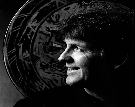
The Shamanic Practitioner
As in many areas throughout the “undeveloped” world, it is possible to find and work with shamans in contemporary society. They may be members of traditional tribes or cultures, or modern urban persons. They will have apprenticed for years if not decades with an acknowledged tribal shaman. It is more likely that one will connect with a shamanic practitioner who has studied neo-shamanism or core shamanism. Such practitioners honor the various traditional teachings, ceremonies and religious beliefs of the native shaman. But in their own work and study, they employ core world views as well as practices that are universal across all shamanic cultures, rather than exclusively embracing a particular path such as the Hopi way or the Aboriginal Australian way.
There is a rule of thumb that warns, “If a person calls himself (herself) a shaman, run!” By most shamanic traditions, such a person is lacking in appropriate humility. In other words, they are taking credit for the good work that Spirit performs in the lives of others. A true Native American medicine man is unlikely to ever call himself by that name, even if he is known to be so and is formally recognized by his entire community.
The Shamanic Journey
The shamanic journey is the basic technique one employs to initiate his/her personal spiritual connection and then to access ever deeper and higher levels of spiritual guidance. Journeying, as it is commonly called, is generally done while lying down with eyes closed, guided by the sound of a beating drum or other traditional percussion instrument(s). The journey frequently involves opening into a trancelike state similar to that of deep meditation. The experience often results in striking visual and somatic imagery full of archetypal themes, visions and intuitive knowings.
Journeying is undertaken to enter into what author Carlos Castaneda dubbed non-ordinary reality, the realms of healing, wisdom and empowerment accessible by great mystics, teachers, artists and healers. The journeyer is able to meet with and learns to work with personal spirit guides or helpers commonly thought of in our culture as guardian angels. The journey can offer profound intuitive and spiritual guidance. Moreover, shamanic traditions teach us that work done while journeying (in alternate or spiritual dimensions) can lead to functional and effective change in ordinary reality and can improve our everyday life.



Stephen Neal Szpatura